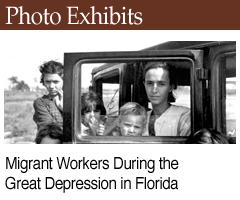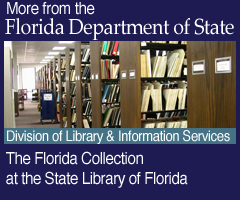A Guide to New Deal Records
at the State Archives of Florida

Collections by Creator
RG 102 Office of the Governor
The record group contains the administrative correspondence and other files of Florida's governors from 1929 through 1971. These series contain the official correspondences of the Florida governors. The records reflect the official, constitutional, and political duties of the Office of the Governor. The three series consists mainly of incoming and outgoing correspondence filed by general subject area, agency or organizational name, or county name.

S 278 Dave Sholtz correspondence, 1933 – 1937
60.25 cubic ft.
Summary:
David Sholtz was born on October 6, 1891, in Brooklyn, New York. He graduated from Yale University in 1914 and received his law degree from Stetson University in 1915. After serving in World War I, he settled in Florida where he became a lawyer and businessman in Daytona Beach. Sholtz was elected governor in 1933 during the Great Depression. Known as Florida’s New Deal governor, Sholtz implemented many Federal relief programs at the state level, including the CCC, PWA and WPA. He also promoted governmental reorganization. After leaving office, he practiced law in Miami. He died in the Florida Keys on March 21, 1953.
Summary:
Arranged by year, then alphabetical by subject. The correspondence files of 1936 are incomplete -- all files after M are missing.
S 368 Fred Cone correspondence, 1936 – 1941
50.25 cubic ft.
Summary:
Frederick Preston Cone was born in Benton, Florida, on September 28, 1871. A banker and a lawyer in Lake City, Florida, Cone was elected its mayor for three terms. He later served in the State Senate from 1907-1913, and was President of the Senate in 1911. In 1936,Cone was elected Florida’s Governor, where he oversaw the State-sponsored exhibit at the New York World's Fair, urged the licensing of drivers to collect funds for the highway patrol, and fought new taxes. Not a fan of the New Deal, Cone cut back many of its programs and funding. After leaving office he returned to Lake City where he died on July 18, 1948.
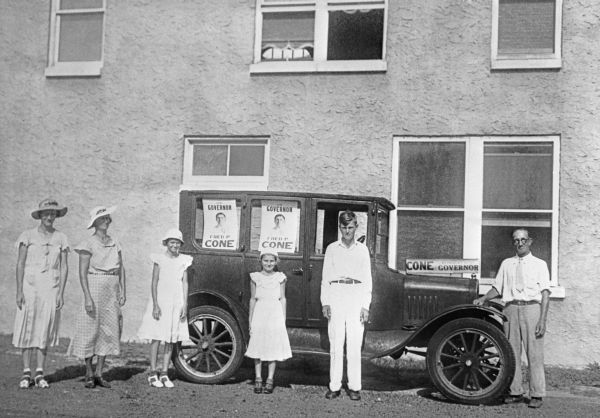
Summary:
Arranged by year, then alphabetical by subject. Correspondence files of 1939 are incomplete, files for L, the beginning of M, and Wh-Woo are missing.
S 406 Spessard Holland correspondence, 1940 – 1945
60.50 cubic ft.
Summary:
Spessard Lindsey Holland was born in Bartow, Florida, on July 10, 1892. After receiving his law degree from the University of Florida in 1916, and practiced law in Bartow, Florida. He served as Polk County Prosecutor in 1919, and in 1920 was elected Polk County Judge, serving for eight years. He served in the Florida Senate from 1932 to 1940. Elected as Governor in 1940, Holland dealt primarily with Florida’s role in World War II. The New Deal was disbanded during his term. He later served in the U.S. Senate for four terms. He retired in January, 1971 and died on November 6, 1971 in Bartow, Florida.
Summary:
Arranged by year, then alphabetical by subject.
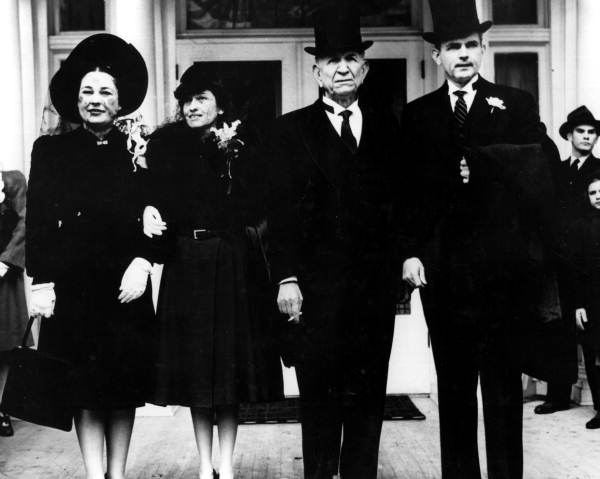
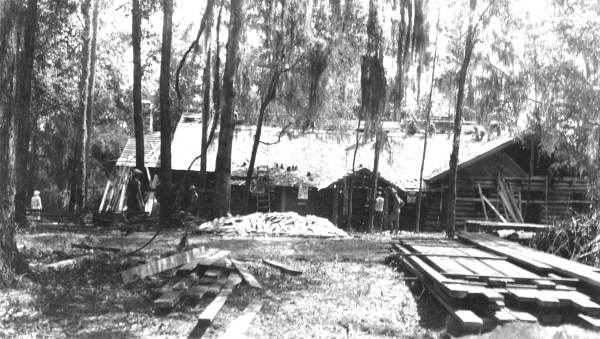
RG 155 Division of Historical Resources
The Division of Historical Resources was created in 1986, assuming some of the functions of the Division of Archives, History, and Records Management. The Division is mandated to preserve and protect Florida's history. The Division includes the Bureau of Historic Preservation, the Bureau of Archaeological Research, the Museum of Florida History, and the Florida Folklife programs.
S 1270 Florida State Parks project files, 1933-1942, 1988-1989.
1.0 cubic ft.
Summary:
In November 1989, the Bureau of Construction, Florida Division of Recreation and Parks, and the Bureau of Historic Preservation completed a cultural resources survey of eight Florida State Parks constructed by the Civilian Conservation Corps between 1933 and 1942. The purpose of the survey was for eventual placement of the historic properties on the National Register of Historic Places.
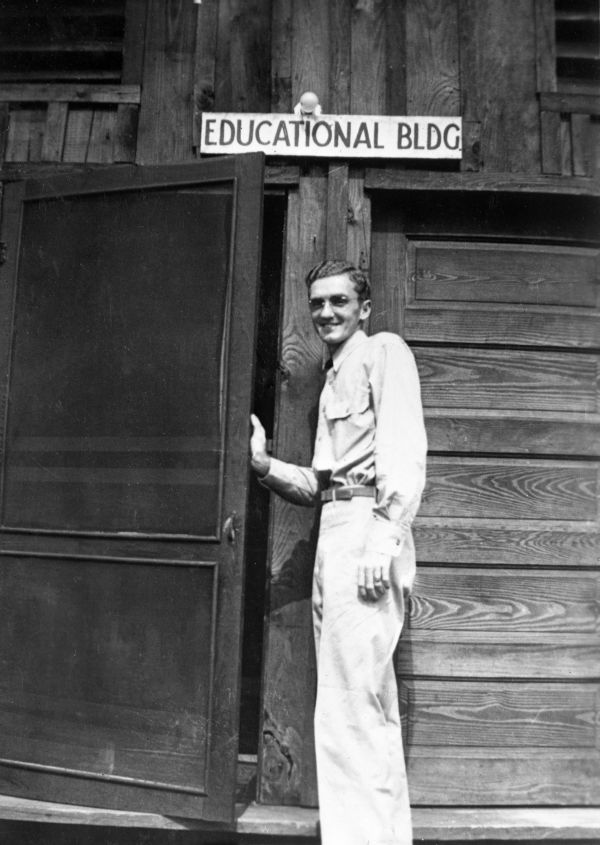
Summary:
This collection contains materials gathered by the Bureau of Historic Preservation for the production of a survey entitled "Cultural Resource Survey: New Deal Era Resources in Nine Florida State Parks." The collection contains materials relating to the construction of the State Parks (1933-1942) and to the completion of the survey (1988-1989).
Included are blueprints, building plans and drawings, correspondence, oral histories, photo inventories, reports, site maps, and unpublished manuscripts. In addition, there are two cassette tapes of an interview with Allen Altvater about the Highlands Hammock State Park and a copy of the "Cultural Resource Survey."
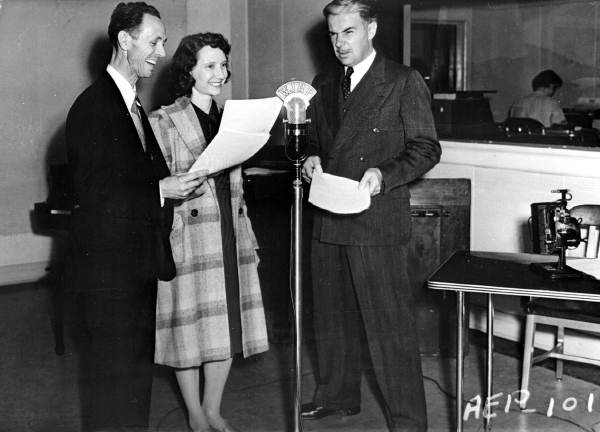
RG 158 Bureau of Florida Folklife Programs
The Bureau of Florida Folklife Programs operated from 1985 until it was abolished in 1995. The bureau operated under the Division of Historical Resources with the mission to identify, preserve, research, and further develop Florida folk arts and traditions. A part of the bureau was the Florida Folklife Archive, originally established in 1976 and maintained by the bureau as a depository for field notes and research findings of the Folklife Program and the collections of other researchers.
S 1576 Audio recordings of Florida Folk Festival performances and other folk events, 1935-2001.
4,713 items
Summary:
This series consists of audio recordings of performances and interviews of folk musicians, singers, artists, and storytellers, including many from the Work Progress Administration (WPA) folklore field recordings of the1930s and early 1940s. Included are recordings collected by Zora Neale Hurston on which her voice can be heard both speaking and singing. Together, the recordings document such areas as children's lore, foodways, religious traditions, Seminole culture, maritime traditions, ethnic folk culture, material culture, and occupational lore.
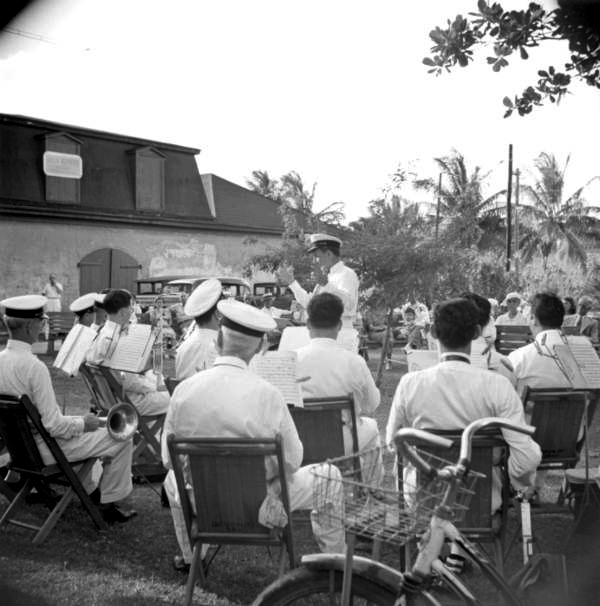
S 1579 Indexes and accession registers to the audio tapes, video tapes, photos, and slides of the Florida Folklife Archive, 1935 – 2001
6.25 cubic ft.
Summary:
This series contains the tape log indexes and the accession registers for the audio tapes, video tapes, photographs and slides for the Florida Folklife Archives from 1935 to 2001. The materials referenced were created by the Works Progress Administration (WPA) in the 1930's, as well as recordings from most if not all of the Florida Folklife Festivals since 1954.
S 1583 WPA Federal Writers Project Florida folklore files, 1935-1943.
1.50 cubic ft.
Summary:
The Federal Writers' Project, under the Works Progress Administration, was inaugurated September 28, 1935. One goal of the project was the publication of the "American Guide Series" of guidebooks on each state. FWP offices were established in the states with the requirement that 90% of the staff were to be from the ranks of the unemployed. From the beginning of the project, the collection of folk customs and lore was an integral aspect of the "American Guide Series." Fieldworkers traveled to communities to gather materials for the guide, researching in libraries, interviewing people, observing people, architecture, flora, fauna, etc., and taking notes. The first edition of the WPA Florida guide was published in 1939, and in 1943 when Congress closed the FWP, only a caretaker crew remained in the Florida office.
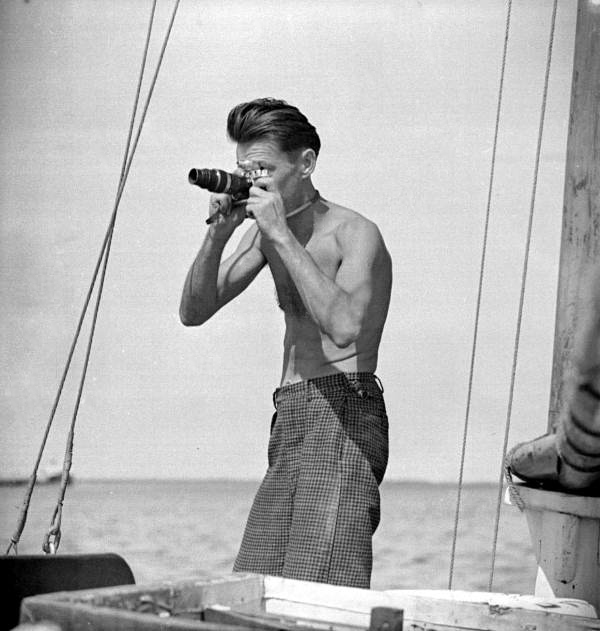
Summary:
This collection consists of copies of research gathered in the 1930s and 1940s by the Federal Writers' Project of Florida. The materials are transcripts and edited copies of interviews and field notes. These records document a broad range of folklife subjects from Florida's Cracker, Afro-American, Cuban, Seminole, Minorcan, and other ethnic cultures. Of special interest are the narratives of former slaves. For related materials, see series S1585, The Stetson Kennedy Florida Folklife Collection.
S 1584 Stetson Kennedy donation records,1936-1989.
.50 cubic ft.
Background:
Stetson Kennedy of Jacksonville, Florida, has spent most of his life studying the people of Florida, their lives, and their environment. Between 1937 and 1942 he headed the Florida Writers' Project unit on folklore, oral history, and social-ethnic studies for the Works Progress Administration. He carried a sound recorder with him around the state to capture the songs, tales, and anecdotes of the people of Florida. Kennedy was a founding member of the Florida Folklore Society in 1982 and its president in 1989. He has written and published many books on Florida and Southern culture including Palmetto Country and the Jim Crow Guide.
Summary:
This series consists primarily of catalog card copies, but also contains other lists, records, correspondence, clippings, periodicals, and instructional material that pertain to Stetson Kennedy's donation of his folklore collection to the Bureau of Florida Folklife Programs in 1988-- Series 1585, Stetson Kennedy Florida Folklife Collection. (See below.) That collection includes some of the Florida folklore materials in his possession as collected by the Works Progress Administration (WPA) Florida Writers' Project with the help of Robert Cook, Alton C. Morris, and John Avery Lomax during the 1930s and 1940s, as well as such materials from other sources.
S 1585 Stetson Kennedy Florida folklife collection, 1935-1991
7.25 cubic ft.
Summary:
This series consists of originals and copies of materials related to Florida folklife created and/or maintained by Stetson Kennedy, who headed the WPA’s Federal Writers Project in Florida. The series includes WPA subject files, school readers, manuscripts, and general subject files, obtained by Kennedy when the Federal Writers' Project folded in 1943. These files include interview transcripts and other field notes of WPA writers. It appears that Stetson Kennedy added related materials, such as newspaper clippings and additional research, to the files over the years. This series also includes several manuscripts prepared by Stetson Kennedy and other WPA Florida writers, including Zora Neale Hurston. Some manuscripts, such as the St. Augustine Guide and "Palmetto Country," were published; others, such as "Good Neighbors Across the Tracks" (about the Latin population of Key West and Tampa), and "History of the Negro in Florida," never were.
S 1629 Ralph Steele Boggs collection, 1935-1941, 1982, 1986
.25 cubic ft.
Summary:
This series is a collection of papers donated to the Florida Folklife Archive by Ralph Steele Boggs. The series includes folklife materials collected by the Federal Writers' Project in the 1930s. The primary subject matter is the culture and history of the Latin American community, Ybor City, in Tampa, Florida. Materials include folk songs, historical background, and descriptions of family life and culture.
S 1728 Microfilm of Farm Security Administration photographs,1936-1942
6.0 microfilm reels, 35 mm
Background:
From 1935 to 1942, photographers for the Farm Security Administration (FSA), including such gifted photographers as Dorothea Lange, Arthur Rothstein, and others, shot over 270,000 photographs documenting rural conditions, life in urban communities, and the war effort on the home front. In 1942, the photographic unit of the FSA was transferred to the Publications Bureau of the Office of War Information (OWI). On January 1, 1944, the entire OWI gphotographic archive, including the FSA photo collection, was transferred to the Library of Congress, where it remains today.
Summary:
This series consists of microfilm of selected U.S. Farm Security Administration photographs, including images documenting conditions in farming, rural, and small town communities in Florida. There is no indication of how or why this microfilm came to be filed with the records of the Bureau of Florida Folklife Programs, although Bureau staff may have used the photographs for general reference purposes.
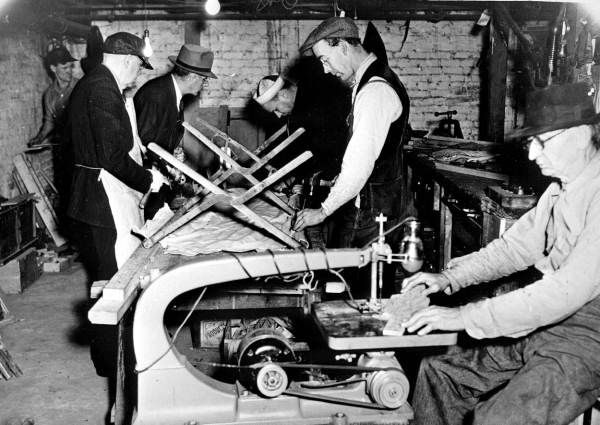
RG 191 State Defense Council
The State Defense Council was created in November 1940 by Governor Frederick P. Cone to orchestrate efforts to get Florida in a state of preparednessfor war. The State Defense Council coordinated local, county, and regional defense councils. The Council was terminated by Executive Order in 1945 with the ending of World War II.
S 419 Subject files,1940-1946
31 cubic ft.
Summary:
This series consists of the subject files of the State Defense Council from 1940 to 1946 documenting the activities of the Council and its officers. Along with letters, publications, reports, resolutions, maps, and charts from local, state, and federal agencies the series also contains records from the Works Projects Administration. Included are reports and publications on topics such as African-American recreation, farm labor, cars, scrap collection, and rationing.
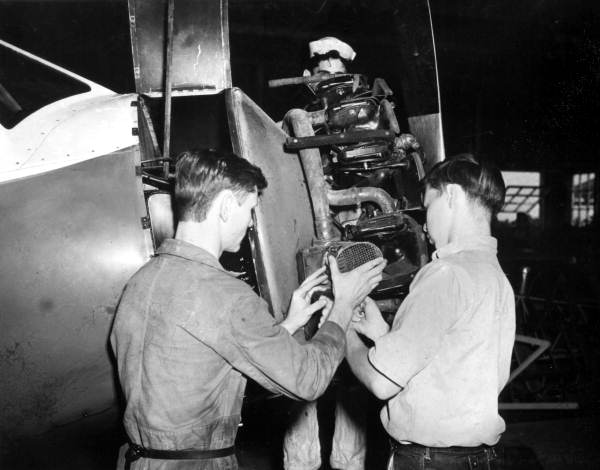
RG 192 State Planning Board
The State Planning Board was created in 1935 as a requirement by the Federal government before Florida could receive future relief funds. It consisted of five members: the Secretary of State, the Chairman of the State Road Department, and three citizens. The Board created and adopted a master plan for the physical development of Florida. It also assembled and studied data pertaining to the state, its citizens, natural resources, and economic development. The Board advised the state legislature, state administrative officers, and citizens on plans for future development. In 1951, the Board was repealed.
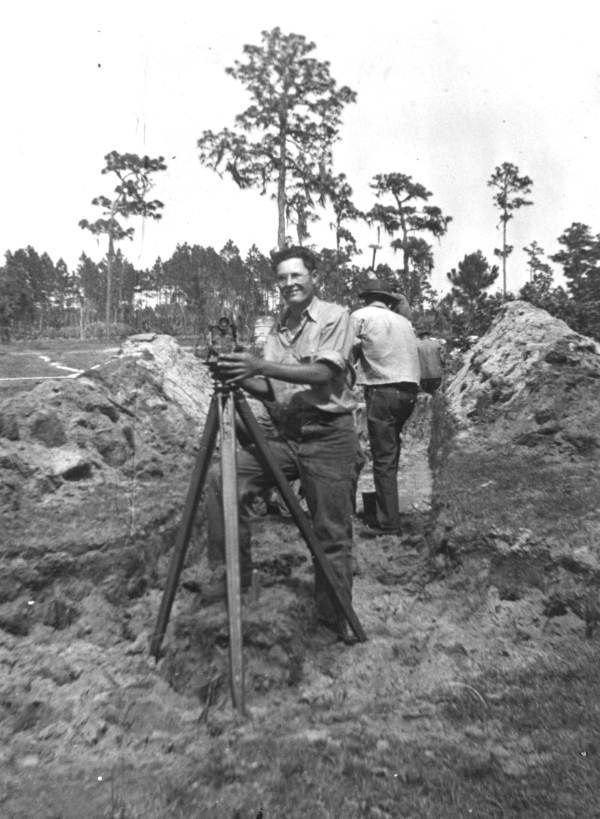
S 1653 Florida recreation facilities survey, 1938
1 folder
Summary:
This collection contains the results of a survey of recreational
facilities in the state that was executed by the WPA. Records include
maps of recreational facilities (e.g. parks, movie theatres and golf courses),
charts, graphs.
Information includes types of facilities costs of maintaining them,
segregated facilities, and the areas lacking such facilities.
S 1655 Tax status and publicly owned land study, 1939-1940
.25 cubic ft.
Summary:
This series contains information collected and collated for the State Planning Board by the W.P.A. using the 1939 state and county tax rolls to provide a comprehensive picture of the taxation status in Florida for use in future tax policies. The collection consists of three volumes: a Manual of Objectives and Procedures that sets forth the goals of the survey and the operational methods that were established for those executing the survey; and two volumes containing statistical schedules for the counties, which are listed alphabetically starting with Bay county. (Alachua county is not included) The volume containing Pinellas through Washington counties is missing.
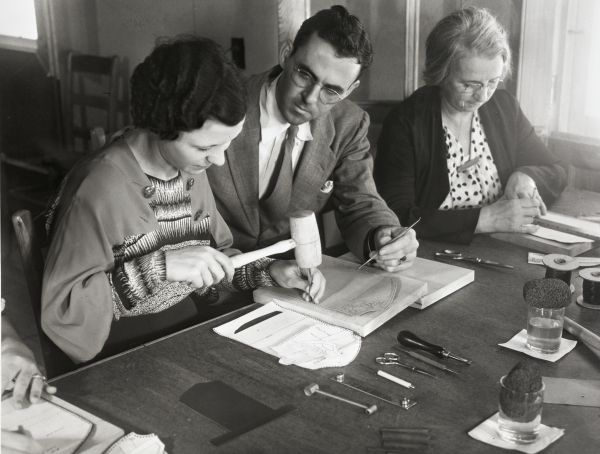
RG 198 State Library Board
The State Library Board was created on June 4, 1925 by an act of the Legislature, which replaced the original State Library, and gave the new one operating authority under the State Library Board. Governor John W. Martin appointed the first three-member board in 1927. The State Library Board was authorized to appoint a State Librarian who was in charge of both the State Library, and efforts to organize new libraries and improve already existing ones. During the New Deal, those duties also included overseeing several WPA projects. William T. Cash was selected as the first Secretary and State Librarian, and served from 1927 until his death in 1951.
S 1505 State Librarian William T. Cash administrative files, 1927-1954
7.0 cubic ft.
Summary:
This series contains subject files and general correspondence documenting the administrative duties of State Librarian William Thomas Cash, along with the development of the State Library. Included are records from the Works Progress Administration and its many programs: the Federal Writers Project, the Statewide Library Project, and the Historical Records Survey.
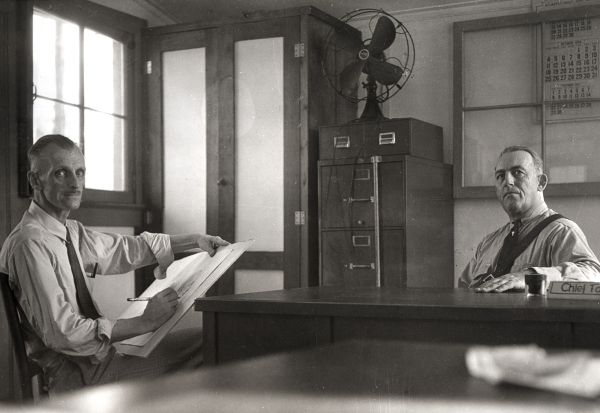
S 1654 Statewide library project papers, 1940-1941
1 folder
Summary:
This collection contains instructions for employees on how the WPA program, the Statewide Library Project will function in Florida. These instructions explain the program’s purpose -- to recruit and train workers for the various libraries that were to be established in the counties served by the project—along with instructions on carrying out bureaucratic functions such as reporting, purchasing equipment, and other activities common to government projects.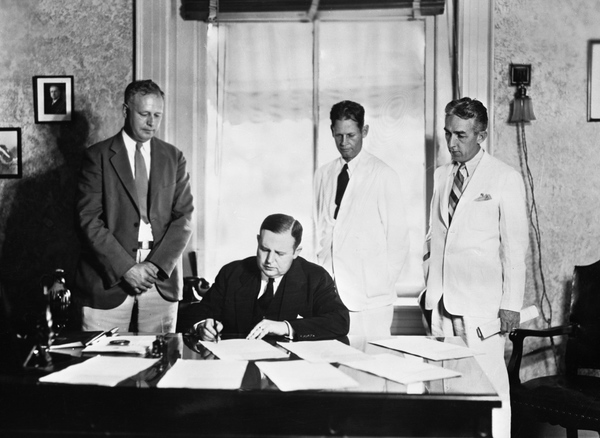
RG 200 Dept. of Agriculture and Consumer Affairs
The Department of Agriculture and Consumer Services was created in 1969, but the post of Agricultural Commissioner was created in 1885. It oversees agricultural regulations, the forest service, livestock issues, food inspections, and consumer protection.
S 1831 Florida Forest Service, program and project photographs, 1931-1941
800 items
Summary:
The Florida Forest Service was one of a succession of state offices responsible for overseeing the commercial, industrial, and natural resources of Florida's forests. Established in 1928 under the Florida Board of Forestry, The Florida Forest Service cooperated with federal and state agencies, counties, towns, corporations, and individuals in disseminating information about Florida forests, managing fire prevention and control programs, and enforcing laws pertaining to forests and woodlands. In 1933, the Civilian Conservation Corps was created, and the Board of Forestry coordinated all the CCC projects in Florida. The CCC expanded Florida’s forestry program with tree planting, establishment of state forests, and fire prevention. In 1969, the Florida Forest Service became the Division of Forestry within the new Department of Agriculture and Consumer Services.
Summary:
This series of photographs documents the programs and activities of the Florida Forest Service and the Civilian Conservation Corps, including black-and-white images of virgin forests, controlled burnings, seedling plantings, turpentining, nurseries, and state parks. Digital copies of the Forestry Collection photographs are available on the State Archives Florida Photographic Collection Web site.
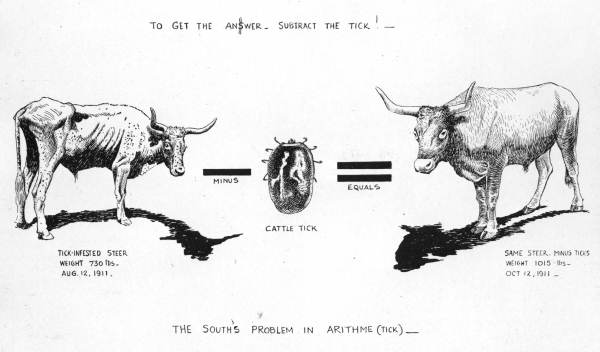
RG 293 State Sanitary Livestock Board
The State Livestock Sanitary Board was created in 1923 and established and enforced regulations to eradicate and prevent the spread of contagious diseases among domestic animals; employed the State Veterinarian; purchased and distributed anti-hog cholera serum; issued permits for the slaughter, transportation, and sale of meat-producing animals; and inspected meat for public sale. In 1953, the Board became the Florida Livestock Board. The Board was abolished in 1961, and its duties were absorbed by the Dept. of Agriculture' Division of Animal Industry.
S 1888 State Veterinarian’s tick eradication records, 1933 – 1951
12 cubic ft.
Background:
One of the major functions of the Board was the eradication of tick fevers. In the early 1900s, the Texas Tick fever entered Florida from imported cattle. By the 1920s, the State Livestock Sanitary Board was requiring all cattle owners to dip their cows with an arsenic solution every 14 days. The state reimbursed them 3 cents for every head of cattle. In 1935, the tropical tick fever broke resulting in more treatments and Board-led destruction of thousands of white-tail deer which harbored the tick. The board regulated not only treatments during its tenure, but also the importation of livestock into the state.
Summary:
The series consists of records of the state veterinarian documenting the State Sanitary Livestock Board’s efforts to eradicate tick fevers from Florida cattle between 1933 to 1951. Records include correspondence, government reports and forms, surveys, maps, board minutes and yearly reports. A large part of the records from the 1930s document the involvement of several New Deal agencies in tick eradication: the FERA, CWA, and WPA. The records are not complete. Records for the years 1939-1940, 1943, 1945 and 1948 are missing.
S 1935 Florida Historical Records Survey files, 1936-1938
.25 cubic ft.
Summary:
This series contains a few of the state records surveys of the Florida Historical Records Survey created between 1936 and 1938. Consisting of only three folders, the surveys describe the Florida Department of Agriculture records that were stored in the State Capitol.
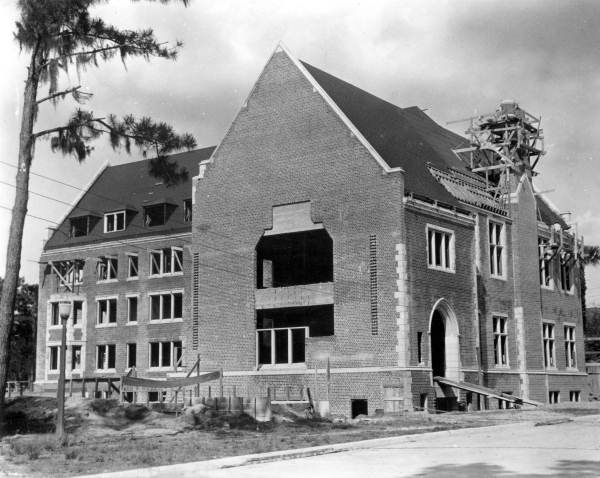
RG 402 Commissioner of Education
The post of Commissioner of Education was established as the Superintendent of Public Instruction under the 1868 Constitution, and became the Commissioner of Education under the 1968 Constitution. The Commissioner was one of the elected Cabinet posts, and oversaw the state’s education system.
S 1124 Superintendent of Public Instruction William S. Cawthon administrative files, 1922-1937
3 cubic ft.
Background:
William Stanmore Cawthon served as the first State High School Inspector from 1909 to 1922. He then served as Superintendent of Public Instruction from 1922 to 1937. Cawthon died in 1963.
Summary:
The series contains the administrative files of Superintendent of Public Instruction William S. Cawthon from 1922 and 1937. The records include letters, reports, court documents, and memoranda on a wide variety of topics. Included is a small amount of material on the FERA activities with public schools.
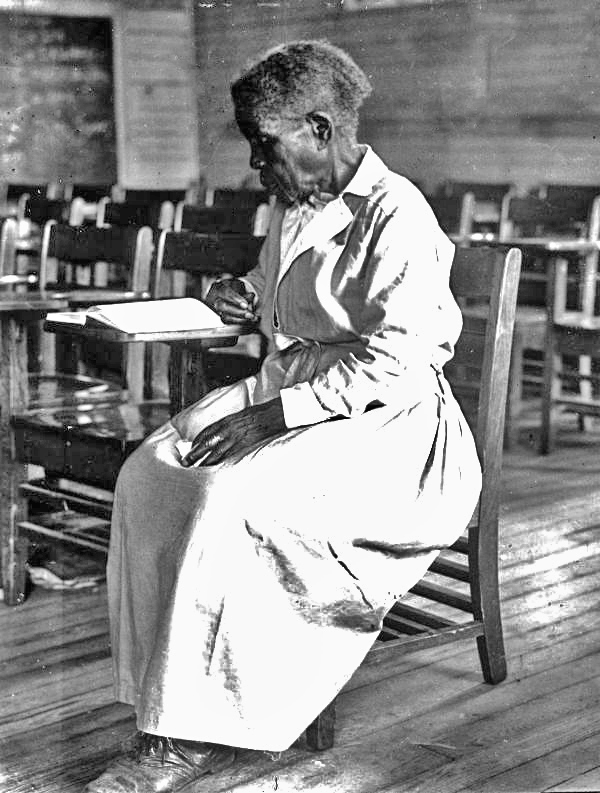
RG 440 Board of Regents
Originally the Board of Control till 1965, the Board of Regents is a corporate entity holding all the powers of a body corporate and elects a corporate secretary. Created in 1905, its Regents are the Commissioner of Education plus twelve members appointed by the Governor. The Board of Regents establishes the policies, rules and regulations for the nine universities in the State University System. The Board monitors the fiscal matters of the universities; approves instructional and degree programs; coordinates program development among the state universities; and plans for the future needs of the State University System.
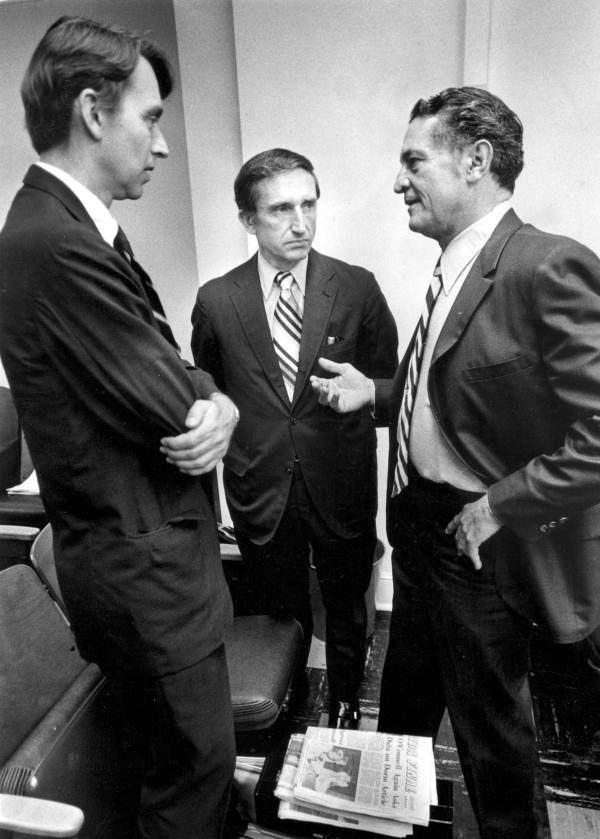
S 1 Minutes, 1905-1997
50 v.
Summary:
This series contains the minutes of the regular and special meetings of the Board of Control Included are a small amount of materials documenting the activities of the FERA and the PWA at state universities.
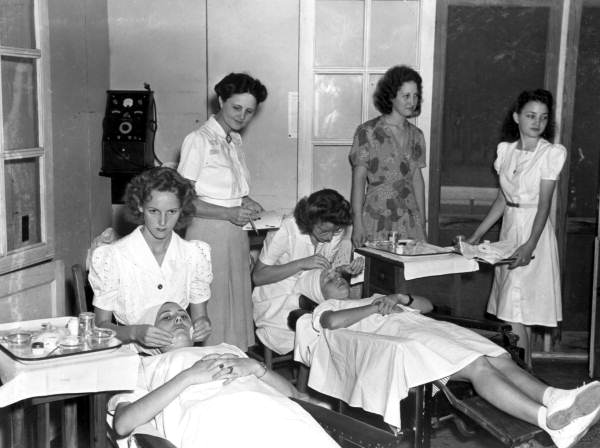
RG 450 Florida State University
Florida State University, in Tallahassee, Florida, was chartered in 1851 and has been state-assisted since 1857. In 1947, the name was changed to from Florida State College for Women to Florida State University and the institution was made coeducational.
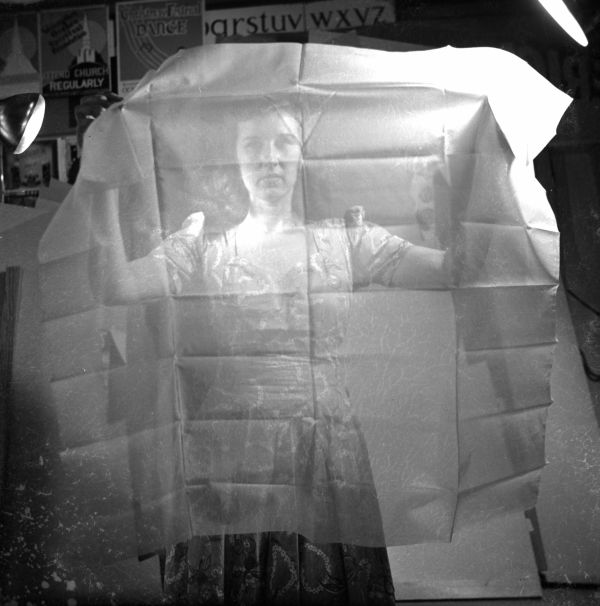
S 1360 Doak S. Campbell administrative files,1941-1957
3 cu. Ft
Background:
Doak Sheridan Campbell was President of Florida State College for Women and Florida State University from 1941 to 1957.
Summary:
The series contains the administrative files from 1941 to 1957 of President Doak S. Campbell. The records include correspondence, memoranda, reports, and budgets. Included are correspondence and other materials related to WPA activities at the university.
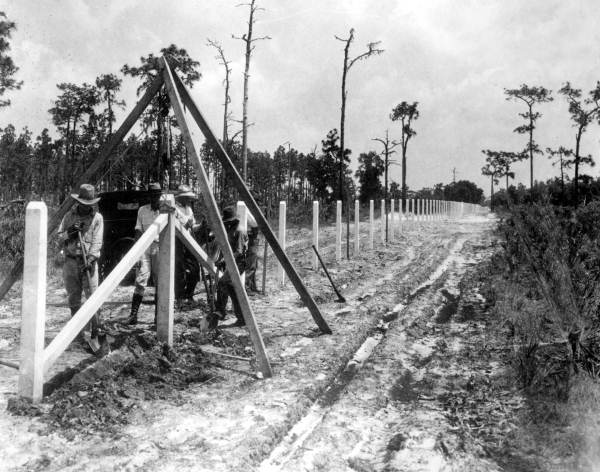
RG 510 Division of Recreation and Parks
The Division of Recreation and Parks, under the Dept. of Natural Resources, was created in 1969. It assumed the duties of the Board of Historic Parks and Memorials and the Outdoor Recreational Development Council. The Division’s primary purpose is the overseeing of the Florida Park Service, a New Deal-inspired program developed in 1935, and built in large part by the Civilian Conservation Corps.
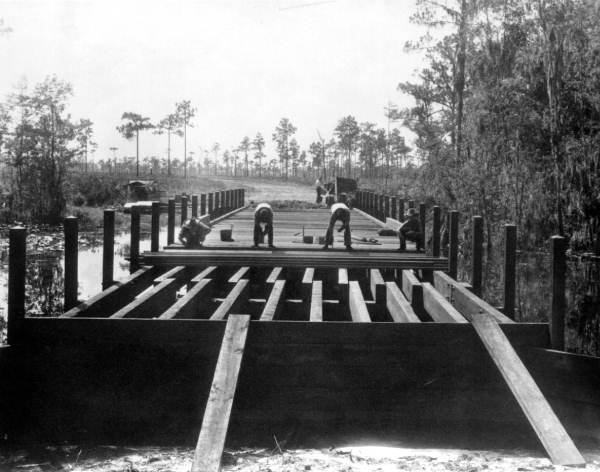
S 1351 State park surveys, 1934-1935
1.0 cubic ft.
Summary:
This series contains state park surveys conducted by the Florida Park Service and the Florida Emergency Relief Administration. Surveys were conducted at various locations around the State for the purpose of finding suitable sites for state parks. The records include copies of the two surveys completed in 1934 and 1935; a general explanation of the project; a copy of the final report; and assorted maps.
S 1352 State park project files, 1936 – 1948
3.0 cubic ft.
Summary:
This series contains the project files maintained by the Florida Park Service (FPS) Director from 1936 to 1948. The files document the Civilian Conservation Corps’ efforts at Florida Caverns, Fort Clinch, Gold Head Branch, and Highlands Hammock state parks. Records include correspondence and memoranda between the FPS project supervisors, the Federal government, the governor, and the park visitors. There are also work orders, CCC forms, inventories and time logs.
S 1919 Civilian Conservation Corps museum exhibit oral histories, 1990
.50 cubic ft.
Summary:
This series consists of five 30-minute videotapes of oral histories by former Civilian Conservation Corps enrollees. The interviews were conducted by the Florida Park Service in 1990 for a CCC museum exhibit at Highlands Hammock State Park. Discussing events during the years 1933-1942, the interviewees included men from CCC camps in Olustee, Niceville, Miami, Biscayne Bay, and two state parks, Highlands Hammock and Gold Head.
S 1943 Florida Park Service Director Emmet Hill's administrative files, 1936-1959 (bulk 1953-1958)
3.5 cubic ft.
Summary:
This series contains the administrative files for FPS director Emmet Hill. While most of the files concern the FPS in the 1950s, there are some reference files from the 1930s and 1940s, including material on the Civilian Conservation Corps and the WPA's Park, Parkway, and Recreational Area Study. Born in 1902, Hill began working for the National Park Service (NPS) with their CCC state park camps. Following a brief period in Kansas at Oberlin Sappa State Park, Hill was transferred in 1936 to the NPS's Central Design Office in Tallahassee. While there, Hill assisted with the layout and design of Florida Caverns, Highlands Hammock, Fort Clinch, Hillsborough River and Torreya state parks. In July 1941, he joined the Florida Park Service as a landscape architect. Following a brief stint working for the Georgia state park system in 1944, Hill went into private business at Kimball Groves in Umatilla until the Board of Parks and Historic Memorials hired him as director in 1953.
S 1945 Florida Park Service Chief of Education and Information Charles H. Schaeffer's administrative and reference files, 1936-1959 (bulk 1954-1959)
2.3 cubic ft.
Summary:
Created primarily between 1954 and 1959, these records include newspaper and magazine articles, correspondence relating to publicity and interpretation, radio scripts, brochures, maps, annual reports, memoranda, post cards, and photographs. However there are several files created in the 1930s by Schaeffer and the Civilian Conservation Corps including bird lists, maps, radio scripts, news releases, and clippings. Schaeffer was the first FPS director and coordinated the acquisition and construction of the first state parks with the Civilian Conservation Corps and the National Park Service. He left in 1937 for an out-of-state job. He returned in the 1950s and died in 1959.
S 1951 Public relations and historical files, 1934-1964
3 cu.ft.
Summary:
This series contains the public relations and historical files maintained by the Office of the Director of the Florida Park Service in the 1950s and early 1960s for use as reference in answering the public's questions. Many of the historical files were originally active director's office files created in the 1930s when the Florida Park Service (FPS) was working alongside the Civilian Conservation Corps (CCC). In the 1950s, these files were re-labeled "history files" and placed in this series. There is also a box of records for the Highlands Hammock Association, a citizens advisory group that established and helped administer Highlands Hammock State Park during the New Deal-era.
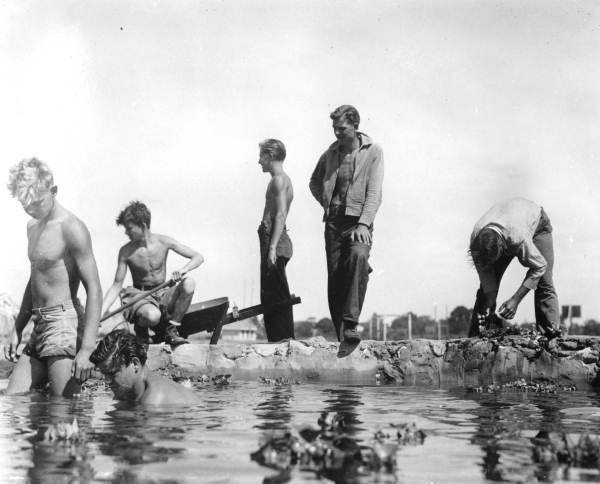
RG 550 Department of Environmental Protection
The Department of Environmental Protection (DEP) was created by the Florida Environmental Reorganization Act of 1993, merging the former Departments of Natural Resources and Environmental Regulation. The Department's mission is to protect, conserve, and manage Florida's environment and natural resources. The Division of Recreation and Parks was now under DEP.
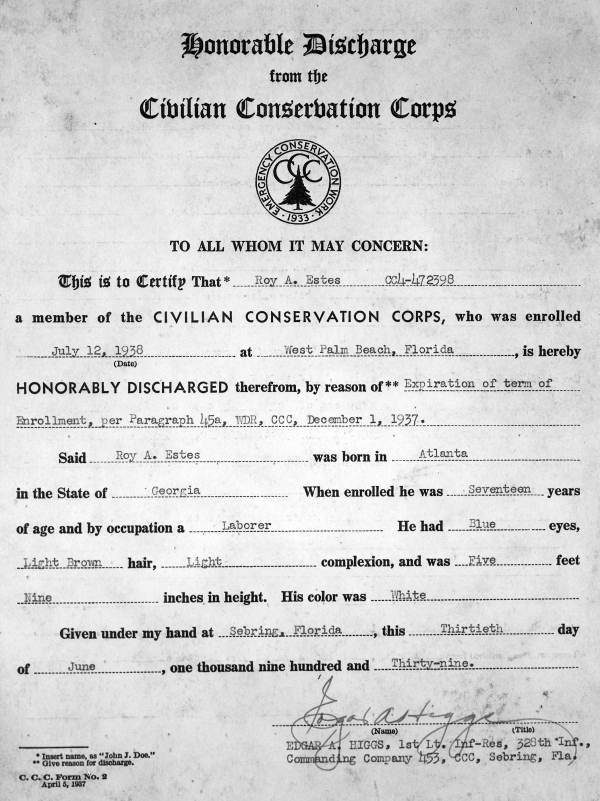
S 1611 Plans for Florida Caverns State Park and other state parks, 1935-1942
38 items
Summary:
This series consists primarily of blueprint and blueline print plans developed by the Civilian Conservation Corps under the National Park Service’s supervision for development of the Florida Caverns and other New Deal-era state parks.
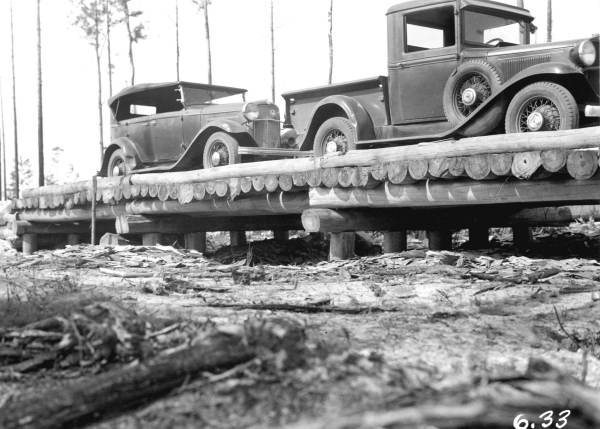
RG 560 Canal Authority of the State of Florida
The Canal Authority was originally established by the State Legislature to acquire the land and equipment necessary to build and operate a shipping canal across the Florida peninsula. Construction began during the New Deal when the FERA allocated $5 million for the U.S. Army Corps of Engineers to begin the canal’s construction in September 1935. However, Congress refused to allocate additional funds for the project, and construction halted when funds ran out in June 1936. Congressional support for a cross-Florida canal grew during World War II, and on July 23, 1942, President Roosevelt signed federal legislation authorizing construction of a cross-state lock barge canal. But funding was still lacking, and the project sputtered along till 1971 when President Richard Nixon halted the project altogether.
S 1726 Right of way acquisition registers, 1935-1938
.50 cubic ft.
Summary:
The collection contains registers, 1935-1938, which were maintained by Herman Ulmer who was acting as the general counsel for the Canal Authority of the State of Florida. These registers contain information regarding the acquisition of tracts of land for the right of way for the cross peninsular shipping canal that became known as the Cross Florida Barge Canal.
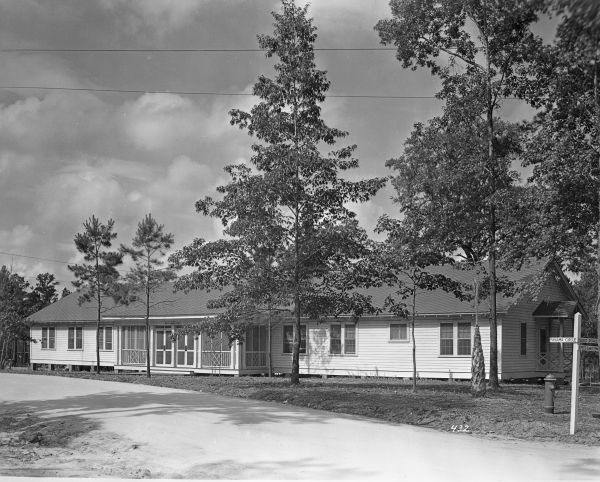
S 1727 Subject files, 1930-1990
11.0 cubic ft.
Summary:
This collection contains records from the Florida Canal Authority primarily documenting the history of the Cross Florida Barge Canal from its beginning to the decision to halt its construction. Included are court cases, newspaper clippings, Canal Authority Board minutes, correspondence, audits, Canal Authority administrative files, biographies of board members, and U.S. Corps of Engineer materials.
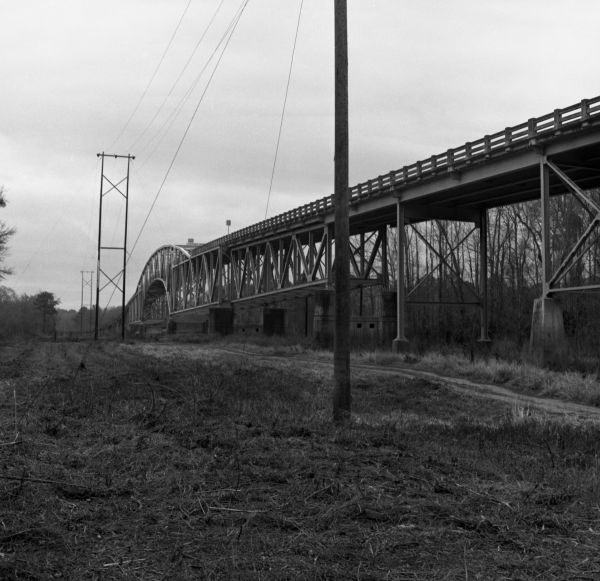
RG 590 Florida Construction program
The Florida Construction Program was a public works program administered by the Board of Commissioners of State Institutions. The program was established to provide work relief and to increase employment in the construction trades by expanding or adding new buildings to state institutions. The building program was funded in 1935 by state appropriations and federal grants and loans from the Federal Emergency Administration of Public Works, commonly called the Public Works Administration (PWA).
S 44 Construction site photographs, 1936
1.0 volume
Summary:
The series contains construction site photographs for 1936 of the Florida Construction Program. The photographs document the construction of several state buildings from the laying of the foundation to the completion. The buildings pictured include structures at the Florida School for the Deaf and the Blind in St. Augustine; the Florida State Hospital in Chattahoochee; the Florida Farm Colony in Gainesville; the Florida School for Girls in Ocala; the Florida State Prison in Raiford; and the Florida Industrial School for Boys in Marianna. All of the photographs are 8x10 inches and in black and white.
S 238 Photographs plates, 1933-1938
.50 cubic ft.
Summary:
This series consists of photo plates and proof impressions of Public Works Administration (PWA) personnel, and buildings constructed by the PWA as part of the Florida Construction Program during the 1930s. Included in the photographs are Florida and U.S. public officials, such as Governor Sholtz and President Franklin Roosevelt. The photographs are in black and white and are of various sizes.
S 430 Ledger, 1935-1939
1.0 volume
Summary:
This series consists of an account ledger documenting the fiscal records of the Florida Construction Program from 1935 to 1939. It documents the accounts kept for each construction project and for the Public Works Administration grants and loans.
S 450 Project files, 1933-1942
8.0 cubic ft.
Summary:
The series contains the subject files of the Florida Construction Program from 1933 to 1940. The records include correspondence, work orders, estimates, specifications, photographs, minutes, and resolutions. Most of the records pertain to work being done at the Florida State Capitol in Tallahassee, the Florida State Hospital in Chattahoochee, and the Florida State Prison in Raiford.
S 546 Publicity Records, 1936 – 1937
.50 cubic ft.
Summary:
This series contains the publicity records of the Florida Construction Program, most pertaining to the publication of a special section about the program in state newspapers. There are solicitation letters for advertisements and responses by contractors, financial ledgers, and lists of building contractors and sub-contractors. There is also a copy of a finished newspaper section, complete with articles about the PWA and photographs.
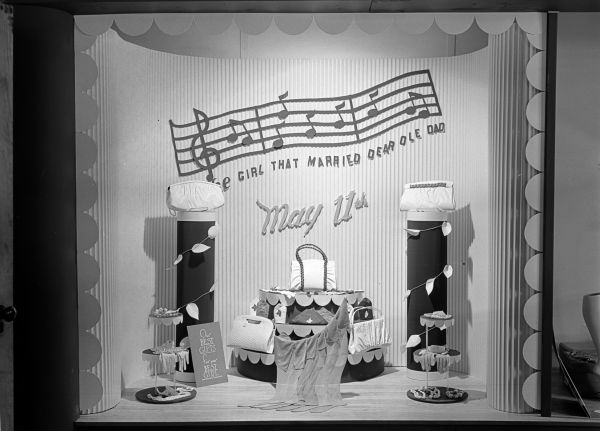
RG 897 State Welfare Board
The State Board of Welfare was created in 1935, replacing the original 1927 State Board of Public Welfare, which only dealt with children, the blind, and aged. This wa sone of the conditions the Federal government stipulated before Florida could receive further relief funds. The State Welfare Board administered state and federal funding for social welfare services and relief aid through a State Dept. of Public Welfare and twelve district welfare boards.
S 871 Historical files, 1927-1950
.25 cubic ft.
Summary:
This series contains the historical files from 1927 to 1950 of the State Welfare Board and its predecessors, the State Board of Social Welfare and the State Board of Public Welfare. The records include historical information on welfare assistance, social security, child welfare, the Adoption Act of 1943, the organization of the Board, and the first biennial report of the State Board of Public Welfare. The files include reports, photographs, and newspaper clippings.
S 367 Minutes, 1927-1969
7.50 cubic ft.
Summary:
The series contains the minutes of the State Welfare Board and its predecessors, the State Board of Public Welfare and the State Board of Social Welfare. The minutes document topics of discussion, decisions made, and actions taken by the Board. Many New Deal programs were administered through this board, and are reflected in the minutes. There is some overlapping of date spans between the volumes because the Board maintained two sets of books. One set of books contains the official minutes, and the other set contains the backup materials to the minutes. There is a gap in the minutes from July, 1935 to August, 1936.
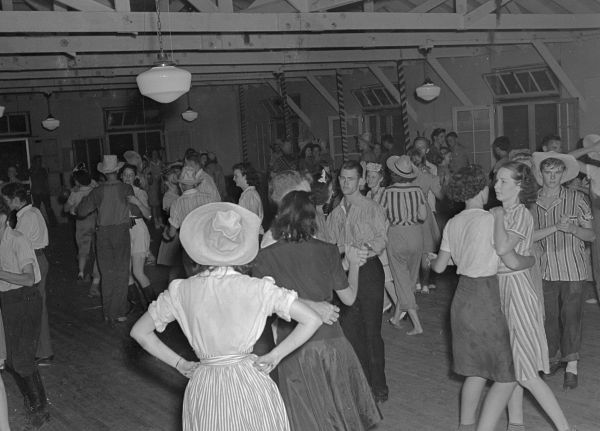
RG 80000 Local Government Records
This record group consists of public records generated by local government agencies throughout Florida. While the State Archives of Florida does not actively collect local government records, it does accept historically significant local records that are in imminent danger of destruction or that complement other items already in the Archives. The record group includes records such as probate, voting, tax, and commission records of different city, town and county agencies.
L 47 Zangara case files, 1933
.25 cubic ft.
Background:
Joseph Zangara (alias Guissepi Zangara) was an Italian immigrant who attempted to assassinate president-elect Franklin D. Roosevelt. Zangara had a strong hatred towards all persons in positions of authority. On February 15, 1933, Zangara attended a speech given by Roosevelt at Bayfront Park in Miami, Florida. When Roosevelt had finished his talk and was preparing to leave, Zangara pulled out a pistol and opened fire. A bystander deflected the assassin's aim by pushing his arm into the air. Zangara wounded five people who had been near the president-elect, two of them seriously. Most critically injured was Chicago Mayor Anton Cermak, who was struck by the bullet in the chest which then lodged in his spine. Zangara was immediately charged with four counts of attempted murder. He was not charged initially with the wounding of Cermak, as authorities waited to see if the mayor's wounds would prove fatal. The State charged Zangara for attempting to murder Franklin Roosevelt, Russell Caldwell, Margaret Kruise, and William Sinnott. Zangara was found guilty on each count and sentenced to four consecutive twenty-year terms.
On March 6, Mayor Cermak died from complications stemming from the shooting. The same day, Zangara was indicted by a grand jury and charged with first degree murder in the death of Cermak. His trial began on March 9 and ended on March 11 with a guilty verdict and a death sentence. The prisoner was transported to the Florida State Prison at Raiford, where he was executed on March 20, 1933.
Summary:
This series contains the case files, dated 1933, of Joseph Zangara, alias Guissepi Zangara, maintained by the Criminal Court of Record of Dade County, Florida. The case files #2262-2265 reflect the trial of Zangara, who killed one person and wounded four others in his attempt to assassinate president-elect Franklin D. Roosevelt. This collection deals with the four counts of attempted murder that Zangara was charged with and subsequently found guilty. The four victims Zangara was charged with include Franklin D. Roosevelt, Russell Caldwell, Margaret Kruise, and William Sinnott.
RG 900000 Manuscripts
M82-7 George Asbell Papers, 1914-1967
1.50 cubic ft.
Background:
George H. Asbell was born in Thomas County, Georgia in 1889. He served in the Florida National Guard, 1914-1918, as a Master Engineer, Junior Grade. After the service, George Asbell became a building contractor, working at various times in Panama City and Blountstown, Florida; La Guaira, Venezuela; and San Juan, Puerto Rico. From 1945 to 1947, he served as the Director of the Motor Vehicle Commission in Florida.
Summary:
This collection contains the papers of George H. Asbell. The records include correspondence, photographs, construction project log books, military service records, and various publications. Of particular interest in the correspondence and photographs are those records dealing with the Public Works Administration's operations in Florida during the Great Depression and the Florida highway construction projects of the 1940s and 1950s.
M83-24 Legal Case files against Dave Sholtz
1.0 folder
Summary:
Originally from Brooklyn, NY, Sholtz was elected Governor in 1933 during the Great Depression. Known as the Florida’s New Deal governor, Sholtz implemented at the state level many of the Federal government’s relief programs, including the CCC, PWA, and WPA. He also promoted governmental reorganization. After leaving office, he practiced law in Miami and spent time in New York City. He died in the Florida Keys on March 21, 1953.
Summary:
This collection contains copies of various cases filed in the Seventh Judicial Circuit of Florida, Volusia County, against David Sholtz. The suits were all filed before Sholtz became Governor in 1933. The collection also includes copies of Sholtz's birth certificate and a statement by the Deputy Tax Collector for Volusia County.
M87-9 Camp Roosevelt Project records, 1936-1942
.25 cubic ft.
Summary:
The "Camp Roosevelt Project" was an adult education extension program jointly operated in Ocala, Florida, by the University of Florida and the Works Progress Administration. The project began in 1936. It is unclear when the project closed, although the last piece of correspondence dates form 1942. Its location had formerly been a United States Corps of Engineer Camp.
During its operation classes were taught in a wide variety of subjects, some of which included: art, art appreciation, drama, English, history, aviation, journalism, meteorology, photography, relief model construction, stenography, speech, radio, woodworking, leatherworking, and weaving. In addition, various conferences were held at the camp for public and private officials.
Summary:
The series consists of administrative records, correspondence,
and photographs related to the adult education project at Camp Roosevelt.
The administrative records contain
primarily financial information and materials relating to the various
classes offered. Correspondence dates from 1936 to 1942 and involves
University of Florida officials. The photographs include views of buildings at Camp
Roosevelt, as well as classroom or workroom scenes of students and their activities.
Also included are a large number of photographs of the University of
Florida campus and of architectural models of the school made at the camp.
M87-12 Architectural drawings of Capital enlargement, 1936 – 1937
100 items; 1.0 microfilm reel
Summary:
The Florida State Capitol’ enlargement in 1936-1937 was a joint project between the Florida Construction Program and the Public Works Administration. M. Leo Elliott, Architect, of Tampa, Florida, was responsible for the architectural drawings and plans for the Capitol project.
Summary:
The collection consists of architectural drawings of M. Leo Elliott from 1936-1937 for the enlargement of the Florida State Capitol. It includes floor plans, elevations, and electrical and heating systems. The collection contains original plans and 24 sheets of revisions.
M95-2 Biographical records on Mary McLeod Bethune, 1890-1960.
1.25 cubic ft.
Background:
Mary McLeod Bethune was born on July 10, 1875 in Mayesville, South Carolina. She moved to Daytona Beach in 1904 to begin her own school. Her one room school became the Daytona Normal and Industrial School for Negro Girls, which later merged with the Cookman Institute to Bethune-Cookman, located in Daytona Beach. Bethune was active in the fight against racism and served under President Roosevelt as a member of the unofficial African American "brain trust." In 1936 Roosevelt Bethune as the director of the National Youth Administration's Division of Negro Affairs. She also founded the National Council of Negro Women and was an active member of the National Association of Colored Women. Bethune died in May 1955.
David M. Williams, a newspaper reporter, planned to write a biography of Mary McLeod Bethune and accumulated photographs, publications and newspaper clippings for the book. He conducted several interviews with Ms. Bethune in the summer of 1946 though the biography was never completed. Williams died in 1969.
Summary:
The series consists of transcripts of interviews with Bethune, letters, and drafts of sections of the biography. The records document the Daytona School and Bethune-Cookman College as well as Bethune's involvement with the National Council for Negro Women. Also included are thirty photographs, which depict Bethune, her Daytona Beach schools, and Bethune-Cookman College.
M97-7 Commissioners minutes and ordinances, 1821-1899, 1915
4.40 cubic ft.
Background:
Originally organized in 1935 as part of the Federal Writers Project of the WPA the Historical Records Survey documented resources for research into American History. It later became a unit of the Research and Records Program in 1939. The HRS was responsible for creating the soundex indexes of the federal census which genealogists today have come to rely so heavily on. The HRS also compiled indexes of vital statistics, cemetery interments, school records, military records, maps, newspapers, and the list went on and on.
Summary:
This collection contains transcriptions of the minutes of the commissioners of some Florida counties done by the Works Progress Administration as part of the Historical Records Survey. The WPA hired workers to transcribe by hand and then typewrite the minutes kept by various governing bodies in Florida. There is also a folder containing some WPA administrative narrative concerning the project. (See also RG 198)
M97-8 Judicial organization information, 1845-1935
1.0 folder
Background:
See M97-7
Summary:
This series was also the result of the Works Projects Administration's Historical Records Survey that took place from 1935 to 1941. The collection contains typescripts of Florida circuit court records. (See also RG 198).
Florida Photographic Collection
The Florida Photographic Collection is a nationally recognized component of the Florida State Archives and contains more than 850,000 photographs, and approximately 2,500 movies and video tapes. The collection forms the most complete portrait of Florida available. While one may visit the archives to see the photos, over 135,000 of the photographs have been scanned and placed on the Florida Photographic Collection Web site.
Photos include governors and other political leaders, CCC camps, New Deal projects, state buildings, Farm Security photographs, sharecroppers, citrus pickers, cigar workers, and other Florida residents from the 1930s.
The scanned photographs are searchable on the through an online search engine. Search guides are also available on the web. The textual records are arranged alphabetically by topic and subject. Copies can be made.
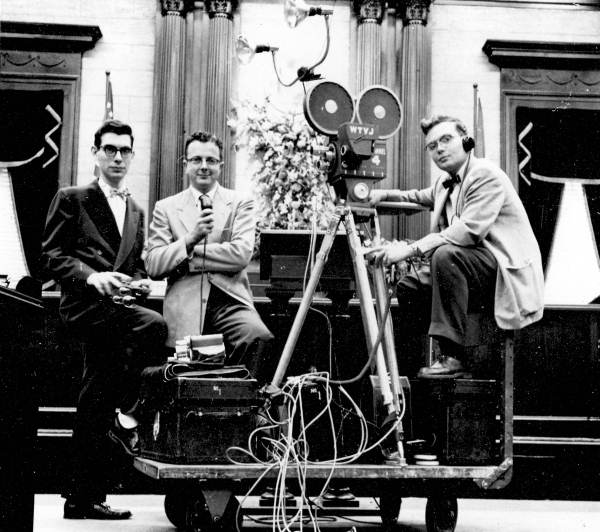

 Listen: The Blues Program
Listen: The Blues Program
